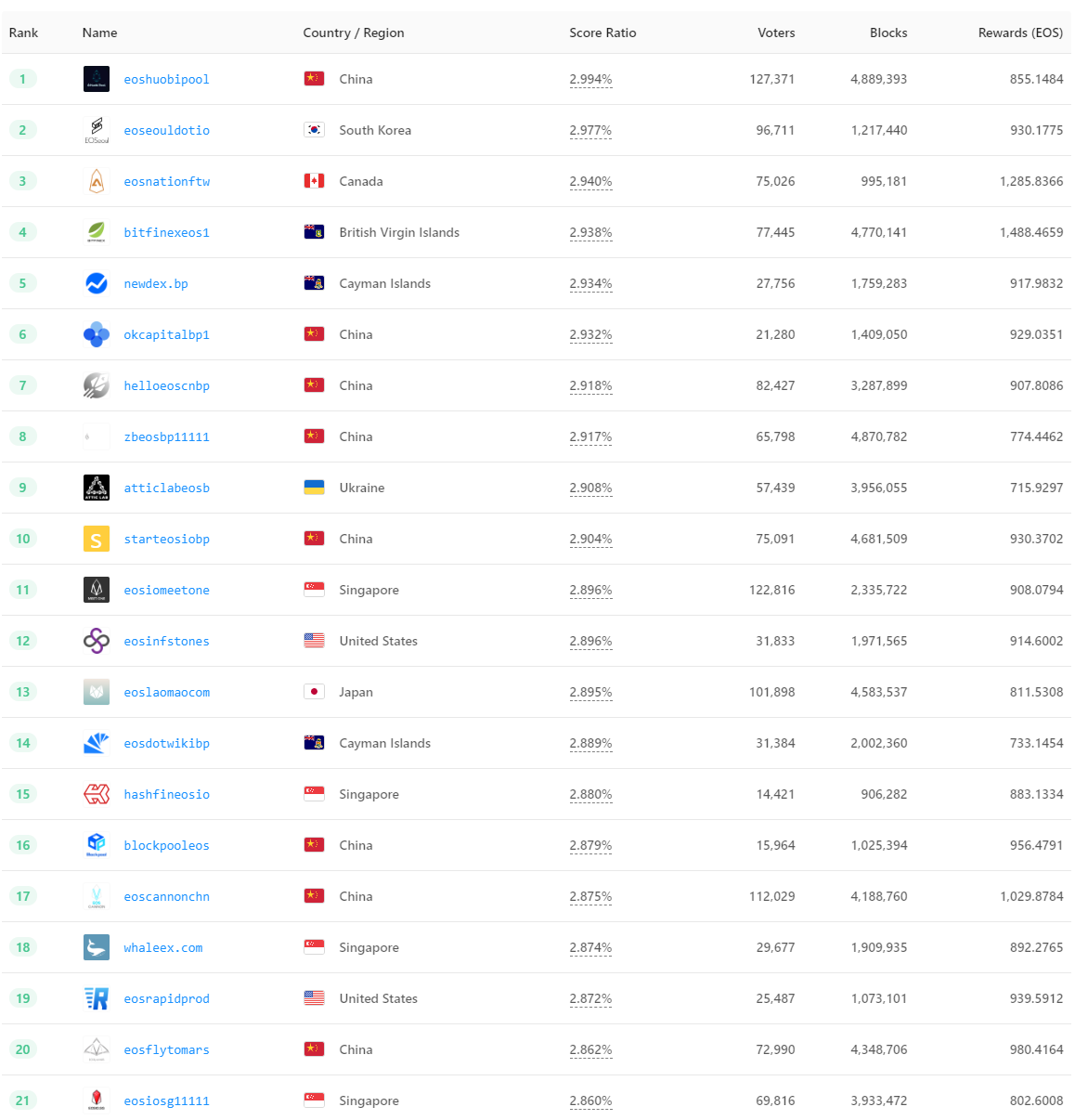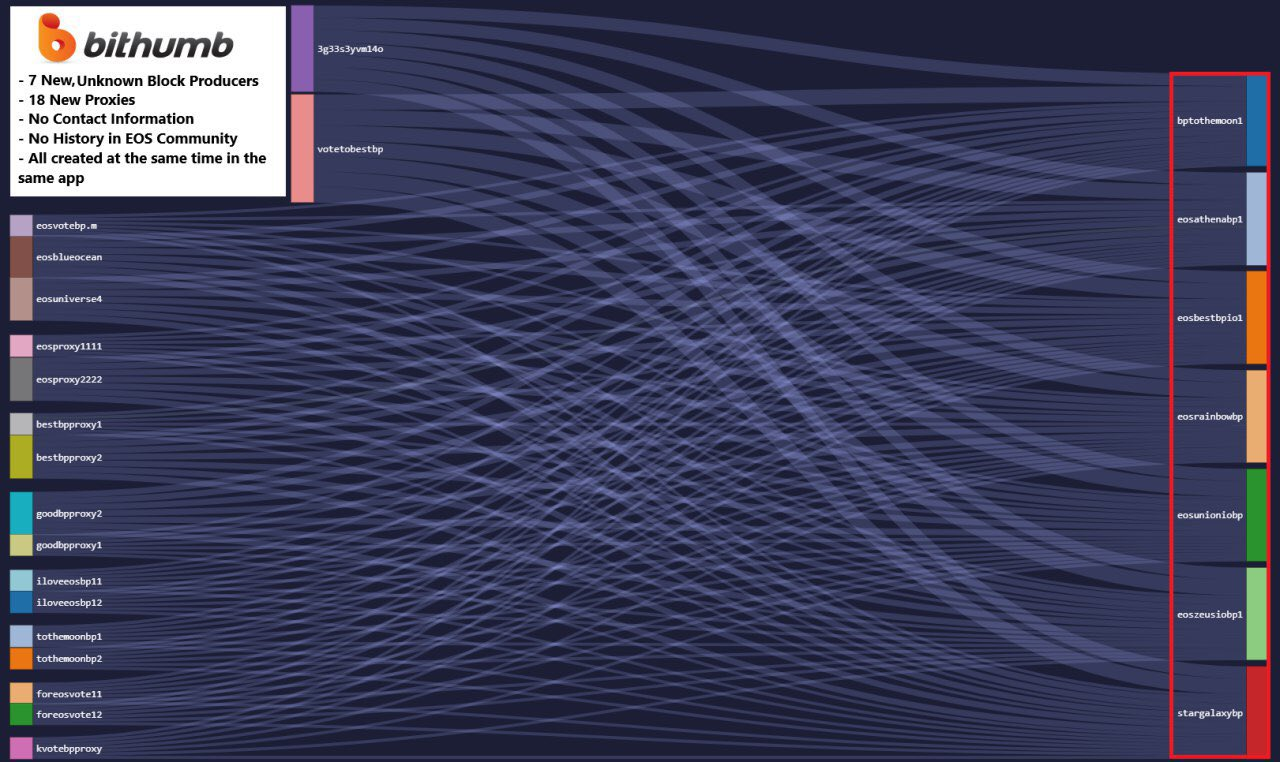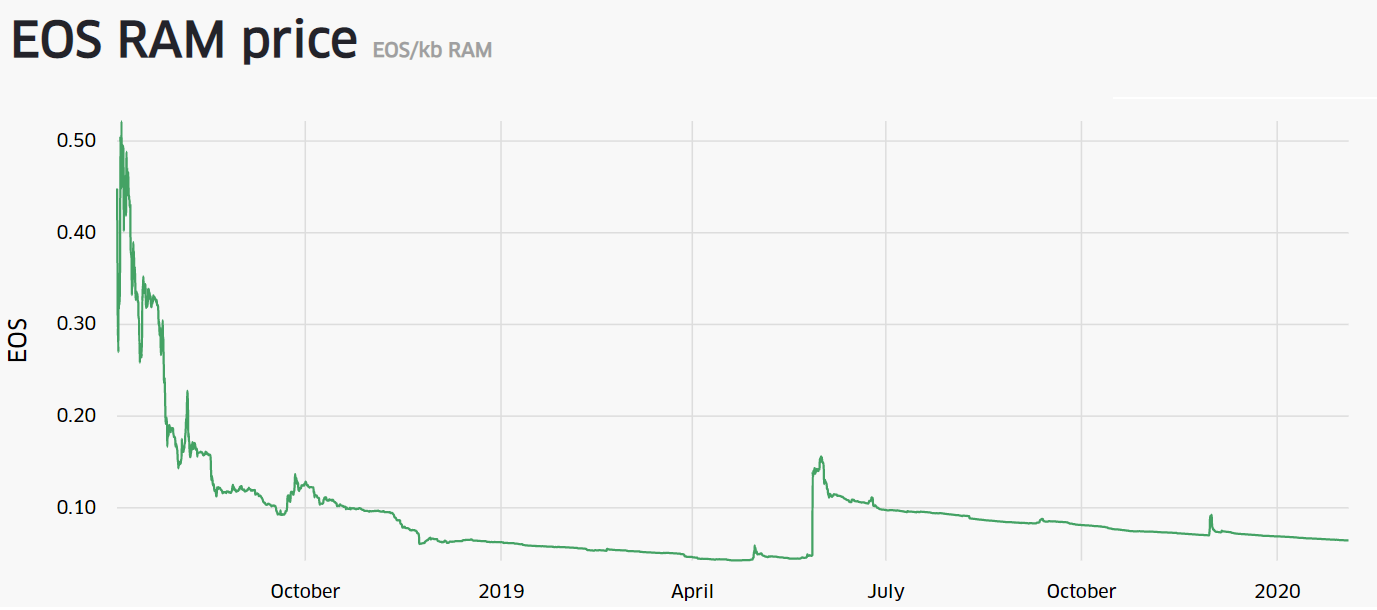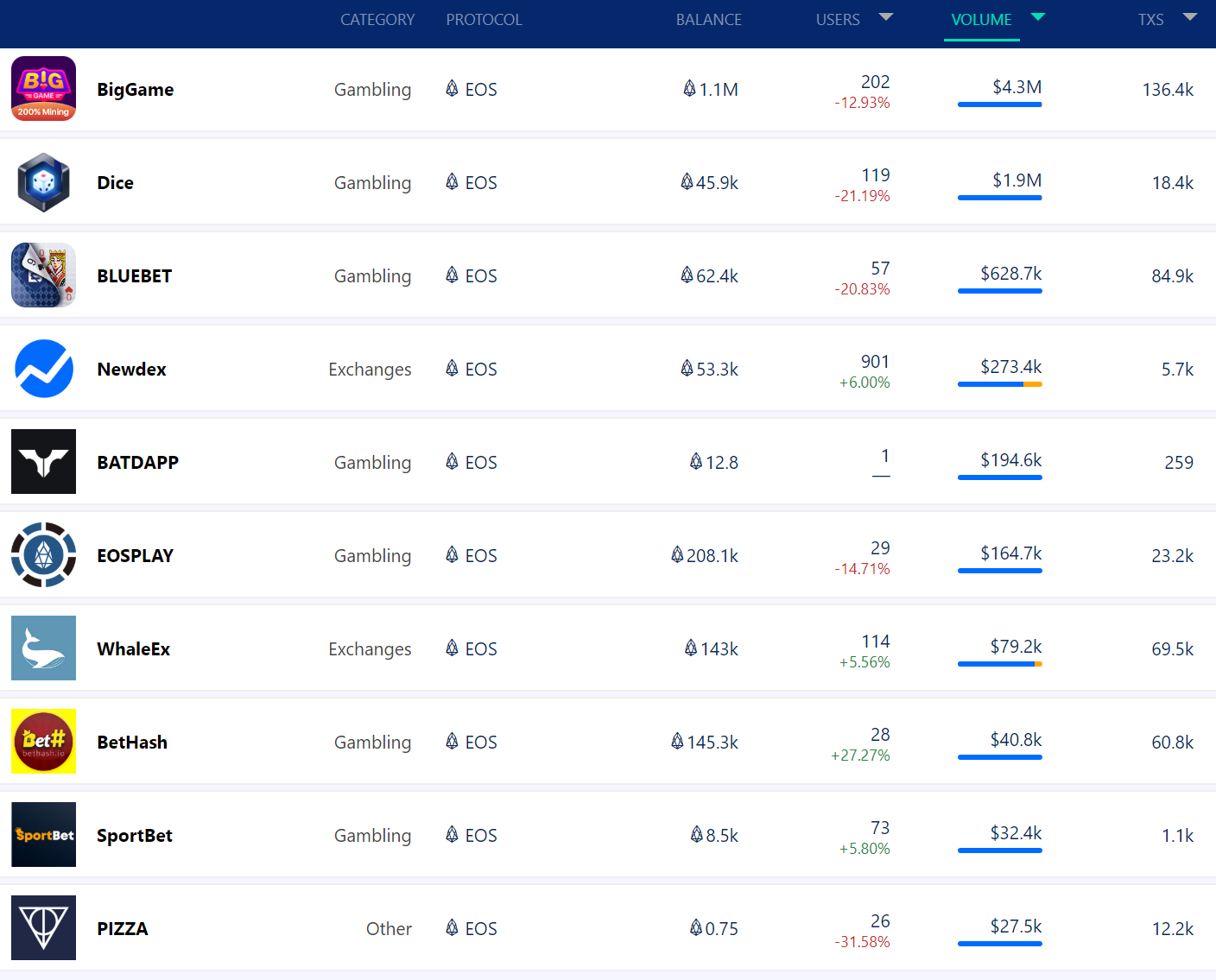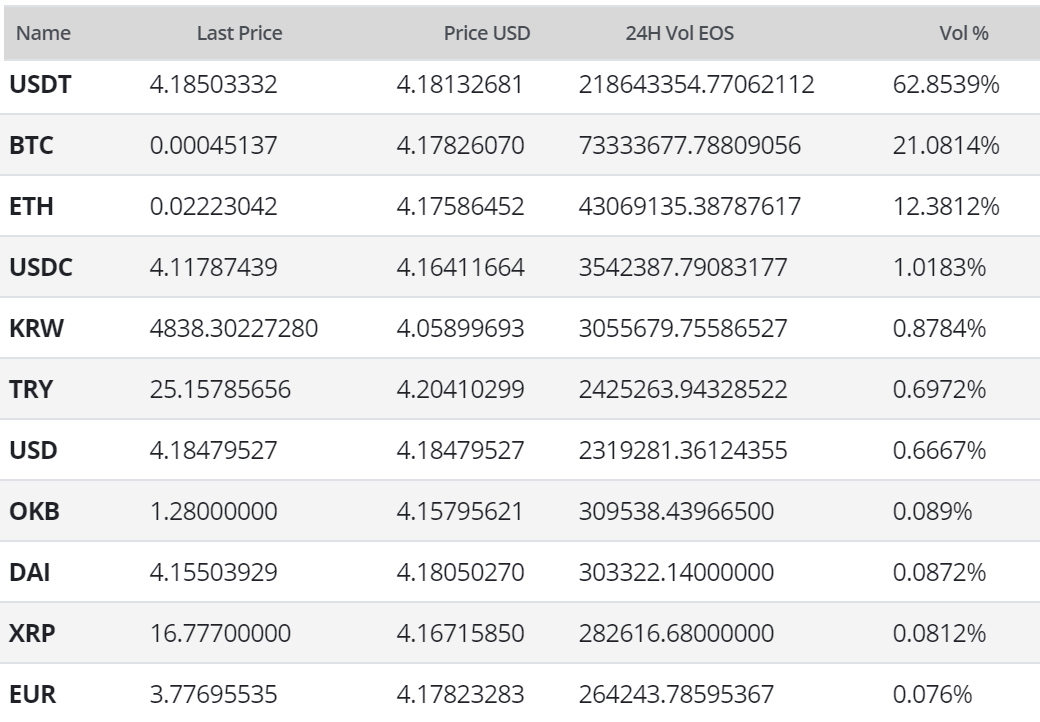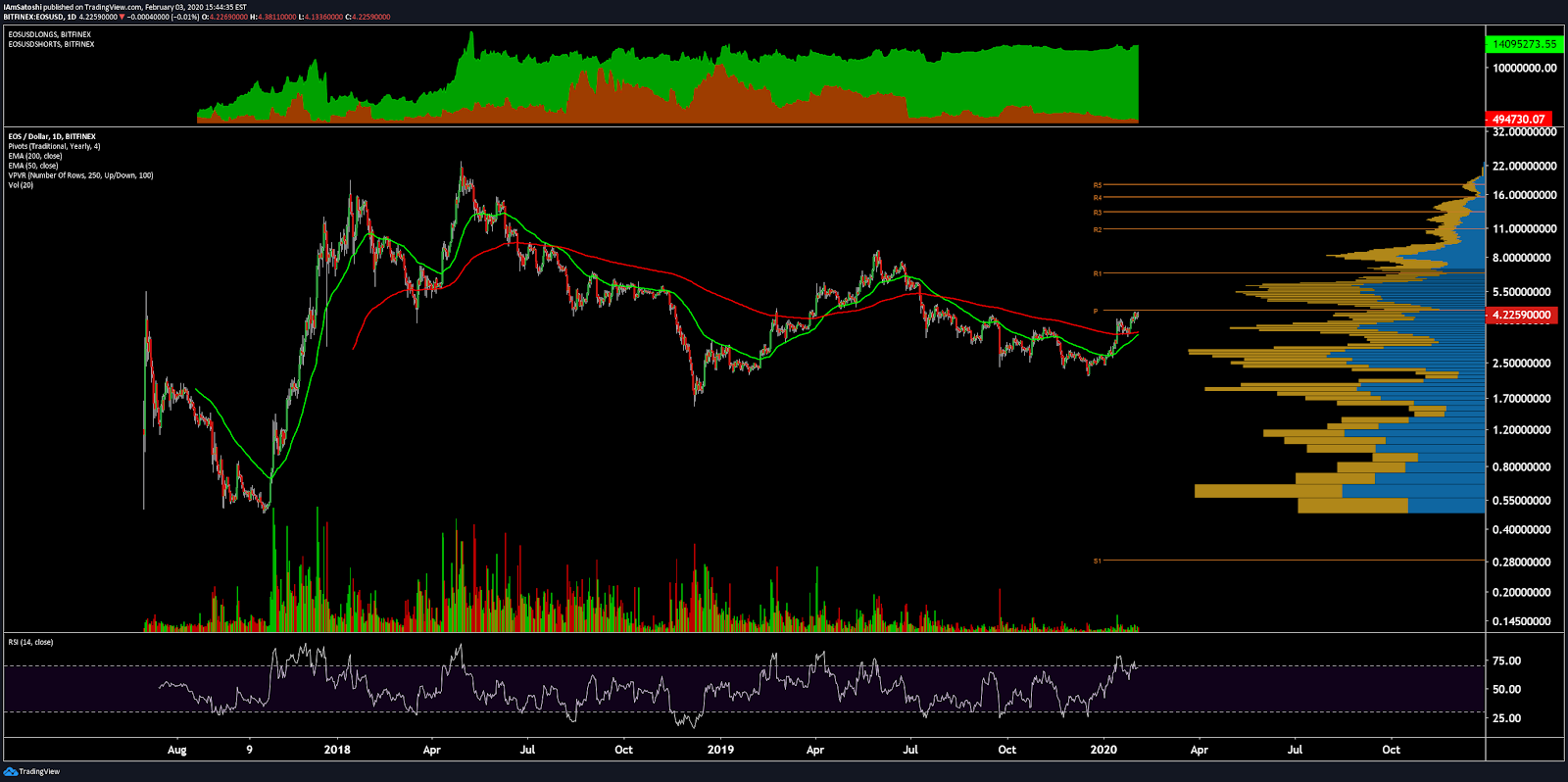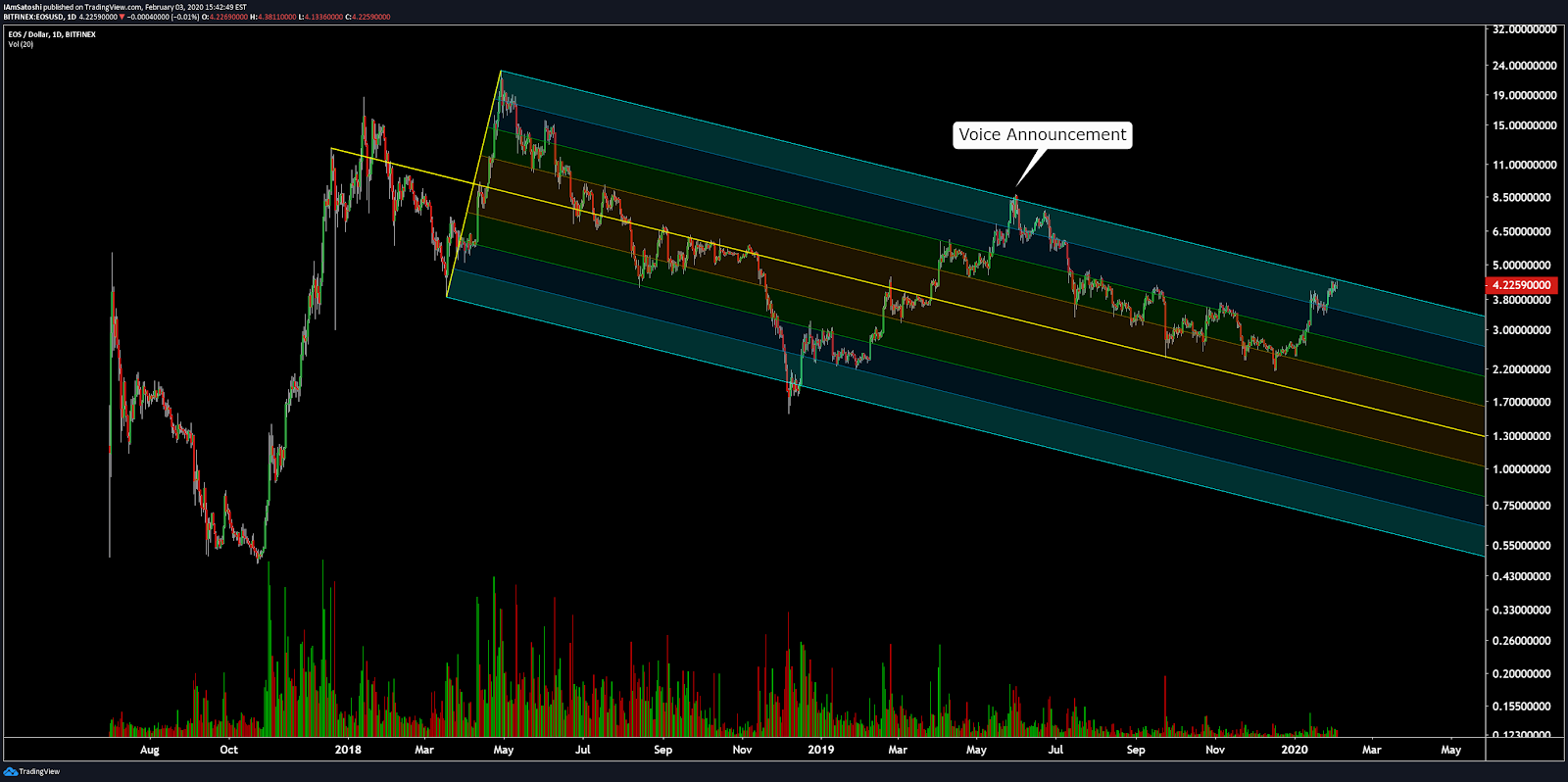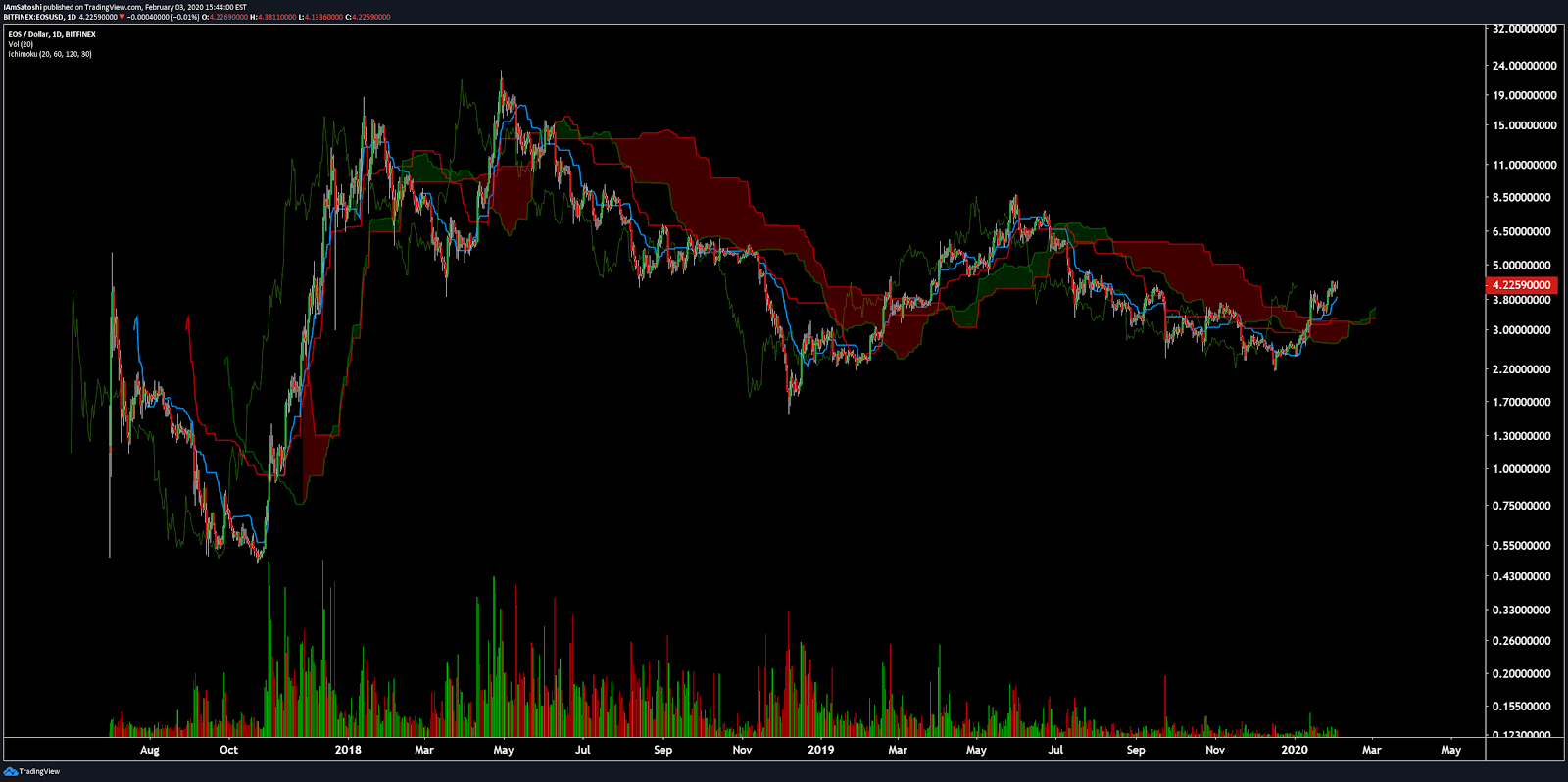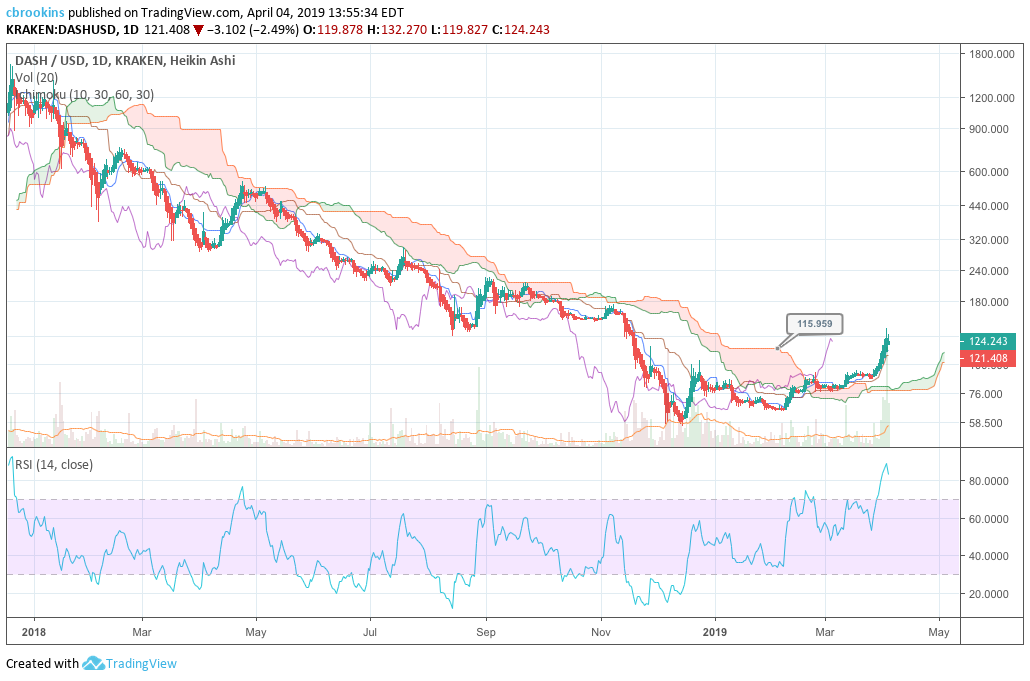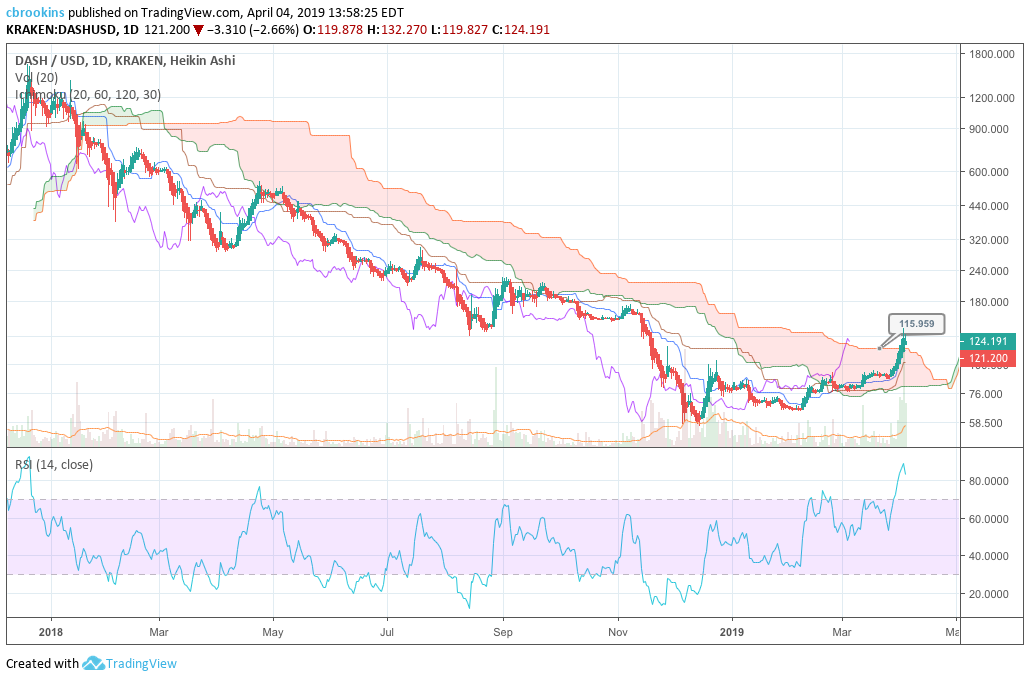Tron Price Analysis: Big updates arriving in Q2
The Tron protocol and the TRX look set to have an impactful Q2 2019 with the release of the full Bittorrent Dapp and the USDT-TRON token. Short term technicals also send bullish signals. Fundamental issues remain, however, with a flawed delegated proof of stake model and a lack of industry diversity within the Tron Dapp ecosystem.
TRON (TRX) is a growing platform blockchain, with a native token TRX, that has firmly established a position in Brave New Coin’s market cap table. The project has consistently divided the crypto community. Tron’s detractors view it as vaporware with value created simply through excellent marketing and PR. Supporters, however, view the project as a legitimate long term challenger in the platform blockchain space, with real potential to disrupt legacy systems in the digital media and distribution.
TRON, or the TRON protocol, refers to the underlying blockchain, while Tronix or TRX, is the network’s native token that serves a number of different functions within its ecosystem. It is used to power smart contracts and it can be frozen (staked) for users to access zero transaction fees and to participate in voting for network block producers. It is paid-out to block validators for confirming transactions, and a number of Tron Dapps (Decentralized applications) use it as in-app payment token.
However, the most relevant use-case for TRX may be as a medium to make speculative bets based on market signals and the changing public perception of TRON in order to make a profit trading on crypto exchanges like Binance, Bittrex or Bitfinex.
Travis Kling, Chief Investment Officer of Ikigai Capital said, “Owning Ethereum today is a call option on what you think the network is going to be in the future.” Similarly, while most TRX buyers are likely looking for short term profit opportunities, some are buying TRX with expectations of future use cases as the blockchain matures.
With an ICO launch price of USD0.00186, and today’s price sitting at USD0.026 — that represents an increase of 1,297% for early investors. In 2019, the price of TRX has risen approximately 17%, performing well alongside the rest of the crypto market, but it remains down 85% from an all time price high of USD0.180 achieved in early January 2018.
In terms of TRON’s broader network utility, it is a platform blockchain similar to Ethereum. TRON uses an adapted version of the Ethereum Virtual Machine to execute and test smart contracts, called the Tron Virtual Machine.
The vision of TRON as outlined in the most recently published white paper is to build a “project dedicated to the establishment of a truly decentralized Internet and its infrastructure.” A major step in this wider goal was the purchase of the BitTorrent protocol in June 2018 for a reported USD $120 million.
BitTorrent is a popular shared bandwidth file storage solution. It estimates that it has 45 million users daily. TRON’s purchase of the platform was considered a major coup in crypto and finance circles because of the brand value, tech and existing user base of BitTorrent. NEO, another cash-rich blockchain, was also interested in buying BitTorrent in the summer of 2018.
The integration of BitTorrent into the TRON platform is set to begin on an unspecified date in Q2 2019. BitTorrent seeders will be given rewards for sharing their bandwidth with other users on the network for file downloading. Transactions verified by TRON protocol nodes and the Tron enabled version of BitTorrent will run as a Dapp on top of the blockchain called BitTorrent Speed. Rewards to seeders will be in a new token BTT or BitTorrent token, a TRC20 token which functions as a smart contract equivalent to Ethereum’s ERC20 standard.
Ethereum smart contracts are compatible within the Tron Virtual Machine, and TRON markets its solution to blockchain developers as a low-cost, energy efficient deployment alternative vs direct alternative Ethereum.
Tron smart contracts run on a duel format system. There is an option to freeze TRX tokens (stake) to access network energy and bandwidth, foregoing standard TRX based individual smart contract operation gas fees.
This lets users conduct transactions on TRON without paying fees, as long as they are willing to freeze tokens for a period of time. A user on a TRON smart contract based gambling Dapp (Decentralized application), for example, provided they have enough TRX on their wallet/Dapp browser, can freeze tokens and conduct multiple fee-less transactions during a gaming session.
This makes TRON’s no-transaction fee model potentially more appealing than Ethereum for developers building high transaction count Dapps like dice rolling games, where users seek to have as many turns as possible in a set session.
Tron Dapp categories, source:Dapp.Review
Unsurprisingly, a significant amount of the TRON ecosystem is made up of high-risk Casino Dapps that likely benefit from the fee-less model as a way to attract users seeking quick profits and as many tries as required to achieve this. This style of Dapp also tends to be relatively straightforward to create from a design and UI perspective.
While the ecosystem is likely to develop and attract different styles of developers in the future, the lack of diversity in Dapp building within the current iteration of the TRON protocol does affect perceptions of the potential future value of the project.
The TRON platform has been criticized by the blockchain dev community for;
- making bold, unverified claims in documentation i.e. that the network handles, or is expected to handle 10,000 TPS (Transactions Per Second)
- Testnets that have a tendency to drop off for hours
- A crude infrastructure overlay as compared to Ethereum with fewer Software Developer Kits (SDKs) and fewer mobile Dapp wallets
- Smart contracts that cannot be redeployed. If a developer makes a mistake in their code, then the only option is to upload a completely new smart contract.
Tron vs others, source: Dapp.Review
Despite a general focus from the TRON development community on building within a specific category, TRON has gained significant traction in number of users, amount of onchain volume and number of onchain transactions. The EOS blockchain offers a similar fee-less model for deploying smart contracts and Dapps.
Over the last 90 days, the TRON protocol has shown steady growth in users, and on some days has been the leading platform blockchain in daily onchain volume as well as the number of daily transactions.
This is a bullish flag that suggests the network is being used frequently, and that TRX is changing hands between its network of users. That said, there are questions around the nature and economic quality of these transactions because of the TRON protocol’s zero-fee model and current ecosystem focus on gambling and high-risk Dapps.
TRON uses a modified version of Delegated Proof of Stake (DPoS) called TRON Proof of Stake (TPoS). There are three types of nodes within the TRON network: Witnesses (Super Representatives), Full Nodes and Solidity Nodes. A witness is responsible for block production; a full node provides APIs, and broadcasts transactions and blocks; a solidity node synchronizes irrevocable blocks and provides inquiry APIs.
Super Representatives represent the ‘Delegated’ aspect of the TRON consensus model. There are 27 possible Super Representatives that can be picked from a pool of 127 possible candidates. The 27 are selected every 6 hours to perform their tasks. The pool of 127 possible block producers is selected by the entire TRX token holding community.
The 127 candidates who are updated once every 6 hours share 115,200 TRX per interval. The reward is split in accordance with the votes each candidate receives. The total reward for candidates is set at 168,192,000 TRX (~USD 4,507,545, present spot prices) each year.
Super Representatives, the direct block producers, generate one block every 3 seconds, with each block awarding 32 TRX to Super Representatives. A total of 336,384,000 TRX (USD ~9,015,091, present spot prices) will be awarded annually to Super Representatives.
TRON block producers/ Super Representative set
There is currently no inflation on the TRON network (no new tokens being created by block production) with the TRON Foundation (the original TRX issuer) currently awarding all block rewards and candidate rewards.
This rule has been set until January 1st, 2021 and there is no clear indication what the TRON foundation will choose to do once this date is reached, but it appears that the current model of shrinking money supply is unsustainable in the long run.
The TRON protocol’s permissioned, tight quorum model means the TRON protocol is capable of a high throughput and low transaction costs, however, this comes at the sacrifice of decentralization and censorship resistance.
The TPoS lacks the competition and objective consensus present in Bitcoin’s Proof of Work model, and as such, Super Representatives within TRON potentially have far greater power to game block production and maximize their own profits without fear of being held back by a large network of nodes, particularly if some SR nodes work together to rig the TRON voting model.
The Tron representative voting model has shown signs of being riggable, with evidence of a number of nodes buying, and being placed into their positions through votes from whale accounts and other super representatives who control large TRX holding wallets. Voter turnout has been as low as 10% on previous candidate elections suggesting a lack of accountability for incumbent nodes.
At present the TRON representative voting model is not functioning like the democratic model it was designed to emulate. This is a strong bearish flag, and if the Super Representative model is not re-aligned it remains a significant long term concern for the token holding community.
Leading into Q2 2019, the TRON protocol has a number of updates and releases designed to drive onchain volume and potentially drive positive speculative assessments from the market in the short to medium term. Apart from the release of Bittorrent Speed in Q2, a new TRON protocol based TRC-20 version of the popular US dollar Tether stablecoin has just been released.
Having a well established stablecoin company launching a version of their stablecoin may help TRON attract more enterprise partners to the protocol and improve the liquidity of the budding TRON decentralized exchange ecosystem. The new TRON-USDT digital currency option has already announced support from major Asian exchanges Huobi Global and OKEx.
TRON is also set to launch a new layer 2 scaling solution, the Sun network, named after highly visible and often controversial CEO Justin Sun. Based on initial announcements the Sun network is designed to expand and maximize existing TRON protocol Dapp usage.
The TRON CEO has attracted recent criticism for a botched Tesla giveaway, where participating Twitter users were offered the chance to win an electric supercar through participation in an online lottery. At the end of the promotion, however, there was a lack of clarity on who the winner was and how they were selected. The TRON CEO appears ready to correct the operational mistakes and award the cars to the two possible winners but significant brand damage has already been done.
The TRON protocol has also announced Q2 plans to begin implementing ZK-Snark technology into transactions. TRON appears to be planning to add a privacy feature to TRX transactions, which would allow users to obfusticate private details like address or transaction details to the rest of the network.
It is not yet clear if these announcements have been priced in by TRX trading markets. TRX prices have picked up since late March and early April, but this appears to be more associated with wider market conditions.
TRX gains are aligned with the rest of the market and there are no signs of alpha (above average market returns) attributed to positive momentum created by the new fundamental announcements. This suggests these layer 2 scaling solutions or Zk-Snark announcements may yet create positive buying pressure.
Another consideration is that the market may not react bullishly to the announcements of upcoming protocol features, assessing that the project may be, “over promising and under delivering”.
Altcoin markets seem notably less receptive to speculative announcements than they were during the late 2017- early 2018 bull market, having been through a long period of bearish sentiment in 2018. Crypto projects are often guilty of scope creep, and TRX buyers may be taking a ‘wait and see’ approach.
Onchain assessments
Derived from the NVT (Network Value to Transactions) ratio, the NVT signal is a responsive blockchain valuation metric developed by Willy Woo and Dmitriy Kalichkin. It is akin to the price/earnings ratio signals used in traditional equity markets. Crypto markets are prone to bubbles of speculative purchasing, not backed up by underlying network performance and activity. The NVT signal is a tool to assess drivers of these patterns.
The NVT signal provides some insight into what stage of a price cycle a token is at. A high NVT signal is indicative of a network that is going through one of these bubble periods, and may move towards a position of becoming overbought/overvalued, because of the market’s speculative assessments running out of steam.
All NVT assessments are made post mainnet launch on 30/06/2018 because pre this date TRX existed as an ERC-20 and had significantly different base onchain utility in this form.
The NVT signal of TRX has generally ranged between 20-120 for the last year. Onchain volume on the TRX network appears erratic, and the NVT signal is prone to spikes and drops which makes its usage as a fundamental price indicator limited. Since early 2019 there are signs that the NVT signal line is beginning to smooth out, which may be a sign that the TRON protocol is maturing.
Through March and early April, the NVT signal has followed price/external token value very closely, this suggests that in the short term, traders are better at monitoring external market signals as opposed to onchain volume for indications of upcoming periods of bullishness or bearishness.
However, the NVT signal hitting an inflection level of 20 points in late January, and then pushing upwards, appears to have been a driver of positive fundamental pressure during a recent period of positive price activity. While this price jump happened along with the rest of the market, onchain volume may have been a factor in helping to sustain it.
The lower bound inflection point of TRX’s NVT signal has tested higher lows over time, this suggests that short term periods of bullishness are being driven more by speculation, and less by onchain volume rising quickly against the market value of TRX (heavily undersold). This suggests the NVT signal falling to a level of around 35-40 points is likely a bullish flag.
PMR/Metcalfe’s law
Metcalfe’s law is a measure of connections in a network, as established by Robert Metcalfe, the founder of Ethernet. It has subsequently been used to analyze the true value of network-based financial platforms such as Facebook and Bitcoin, and by comparing it to price, can provide a useful tool to assess whether a token is over or undervalued.
It is also a more straightforward metric to implement versus onchain transaction volume, which can be challenging to measure accurately in USD terms. Addresses are measured as the number of unique sending and receiving addresses participating in transactions daily.
This makes it a relatively transparent metric as compared to onchain volume. However, there may be a question of the granularity of the data, and who controls these addresses.
Matching up with earlier discussed Dapp usage metrics, TRON has impressive Metcalfe’s law numbers. A negative PMR means Metcalfe’s law (active addresses squared) is higher than external token value and suggests a possible network effect within the TRON protocol and therefore sends signals of an undervalued TRX, or a TRX that may pick up in value in the future.
A network effect can create positive fundamental for tokens attached to networks through synergistic transaction activity from a user community. Organic value is created by active user/address growth because it creates more counterparties for transactions, more demand for Dapp builders, and generates other bandwagon or positive feedback loop effects.
Sharp drops in PMR has also often preceded price run ups of TRX. This considered, with PMR currently hovering at around -1 log points, a drop down towards -1.5 to -2 points may be a strong bullish flag.
Social metrics
The primary @TronfoundationTwitter account currently has 411,156 followers and is ranked as the 18,920th largest account on Twitter – averaging 140 retweets and 603 likes per post.
Follower growth has slowed in recent months following sharp pickups during the most recent major price bull in late 2017 / early 2018.
Over recent months the account has tended to pick up a few thousand followers a month, as growth slows during the bear market. There tended to be a steady increase in tweets per month from the foundation through the bear market, possibly in an attempt to create new buying pressure. This pattern ended between March and April 2019.
Tron’s CEO and founder, Justin Sun is also very active and well followed on social media. He runs one of the most popular accounts on Crypto Twitter @Justinsuntron with over 1 million followers. It is currently ranked as the 6,9994th most popular account on the platform, averaging 1,313 likes and 457 retweets per tweet.
The @Justinsuntron account has bucked a trend within crypto twitter, gaining large amounts of followers even during the bearish months of mid-late 2018. There are a number of questions surrounding the validity of these followers, specifically how many are humans, and how many are bots. The account generally tweets over 200 times a month.
Exchanges and trading pairs
The most popular trading option for TRX is USDT, and the pair handles over 50% of TRX daily trading volume. The second most popular market is the TRX/BTC pair and together the top two pairs make up over TRX% of daily trading volume. Fiat transactions with TRX are also available in Turkish Lira, Korean Won and US dollar fiat options. The USD value of daily volume of the entire TRX market is USD $238 million.
USDT Markets in large jurisdictionally fluid exchanges OKEx and HitBTC dominate the TRX trading ecosystem, operating the two top TRX pairs by exchange. TRX is also tradeable on visible and trusted exchanges such as Bittrex, Binance and Huobi.
Technical analysis
Moving Averages and Price Momentum
On the 1D chart, TRX has followed a semi-strong, negative linear price trend with a Pearson’s R correlation between time and price of ~0.65 (not shown), which resulted in a death cross that persisted throughout 2018. However, on the 1D chart, as of April 10, 2019, a golden cross has occurred and price is currently using both 50 and 200 day EMA as support; near $0.026.
The 4H chart shows a similar situation as the 1D, which includes a golden cross, plus 200 period EMA support holding, thus far. If support holds, price is likely to retest the $0.028 resistance level in the near term.
Additionally, on the 1D chart, the volume flow indicator (VFI) is still strongly above 0, which is bullish for price. Furthermore, despite VFI being at elevated levels, the trend is still upward, which may indicate further price strength ahead.
Ichimoku Clouds with Relative Strength Indicator (RSI)
The Ichimoku Cloud uses four metrics to determine if a trend exists; the current price in relation to the Cloud, the color of the Cloud (red for bearish, green for bullish), the Tenkan (T) and Kijun (K) cross, Lagging Span (Chikou), and Senkou Span (A & B).
The status of the current Cloud metrics on the 1D frame with singled settings (10/30/60/30) for quicker signals is bullish: price is above the Cloud, Cloud is bullish, the TK cross is bullish, and the Lagging Span is above price and Cloud.
A traditional long entry would occur with a price break above the Cloud, known as a Kumo breakout, with price holding above the Cloud. From there, the trader would use either the Tenkan, Kijun, or Senkou A as their trailing stop.
Price completed a Kumo breakout on April 9, 2019, which has held since. However, since then, price has declined measurably with Cloud support holding the breakout intact; to date. Per the VFI indicator above, momentum is still in favor of the bulls; for now, which is further validated by the RSI being at an acceptable level of ~51. If Cloud support holds, price targets are $0.03 and $0.032. If Cloud support fails, additional support levels are $0.024 and $0.02.
The status of the current Cloud metrics on the 1D time frame with doubled settings (20/60/120/30) for more accurate signals is bullish: price is above the Cloud, Cloud is bullish, the TK cross is bullish, and the Lagging Span is above Cloud and price.
As above, price completed a Kumo breakout in early-April, but has since seen a demonstrable decrease. However, The Kijun line has acted as support, to-date. Similar to the faster settings, if either Kijun or Cloud support levels hold, price is likely to retest prior resistance levels of $0.03 and $0.032. If support levels fail, additional support levels are $0.023 and $0.02.
Conclusion
TRX has maintained its position as a top 10 cryptographic asset through the crypto bear market. It has proven early critics wrong with the build of an active platform blockchain mainnet. While most network transaction activity on TRON revolves around gambling, the growth and retention of volume and users is impressive and has likely sent positive signals to TRX bulls and hodlers.
TRON is, however, still an immature blockchain with a Delegated Proof Of Stake consensus model that has shown signs of corruption, and a block reward model that will soon have to be reconfigured.
In the short term, holders will hope the wave of Q2 2019 updates; the BitTorrent Dapp release, Tron-USDT, the Sun network, and a ZK-Snark solution, send the right signals to the market and help TRX capture some of the momentum created by the wider bullish sentiment in the crypto markets.
The technical indicators for TRX continue to favor the bulls despite a recent 20% price drop. On the 1D chart, both the fast-setting trader (10/30/60/30) and slow-setting trader (20/60/120/30) will await price to maintain its current Kumo breakout via Cloud support levels near ~$0.026 before entering a long position. A successful hold of the existing breakout is likely to result in a retest of prior resistance levels of $0.03 and $0.032. In the event of a support failure, both trader’s support levels are $0.024, $0.023, and $0.02.

Don’t miss out – Find out more today


